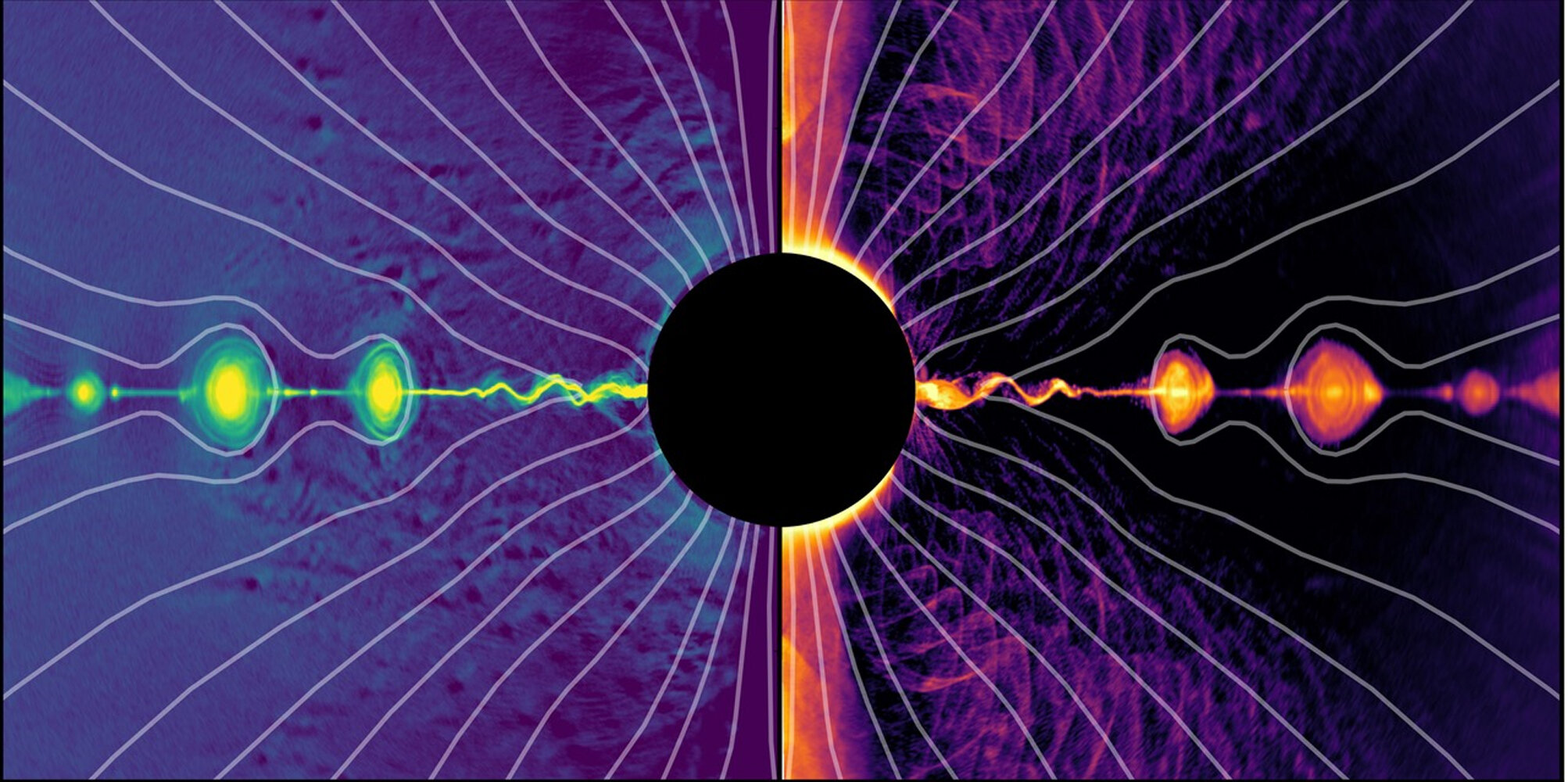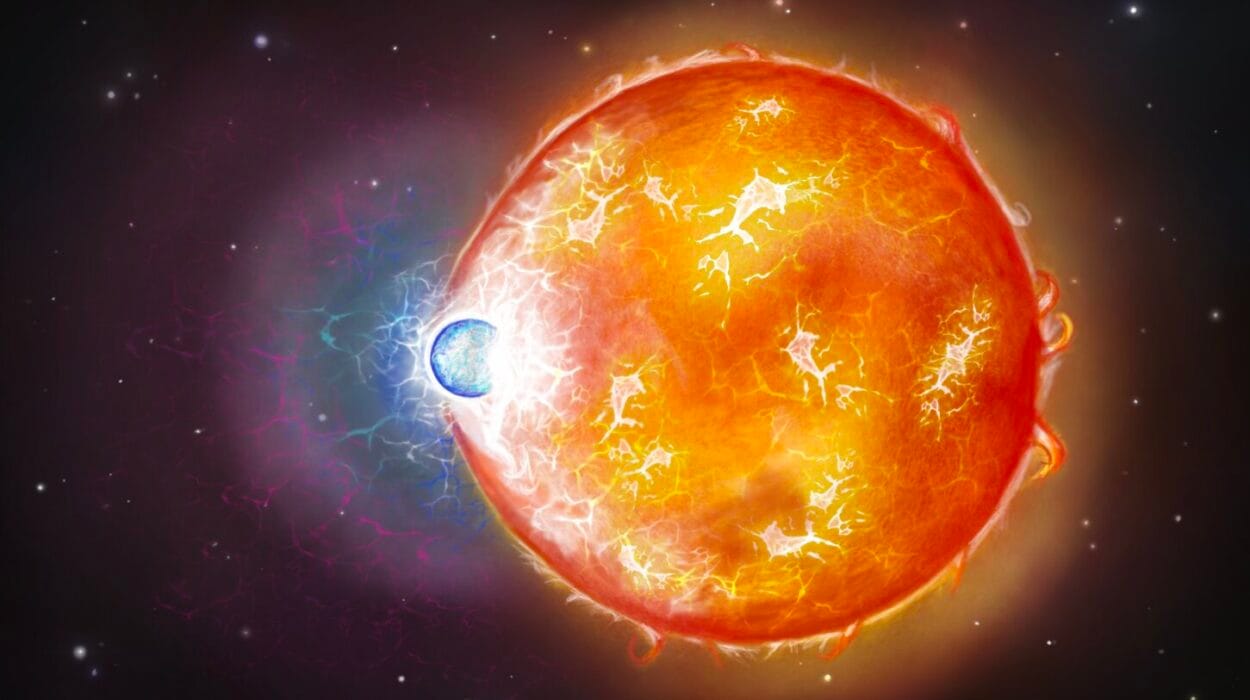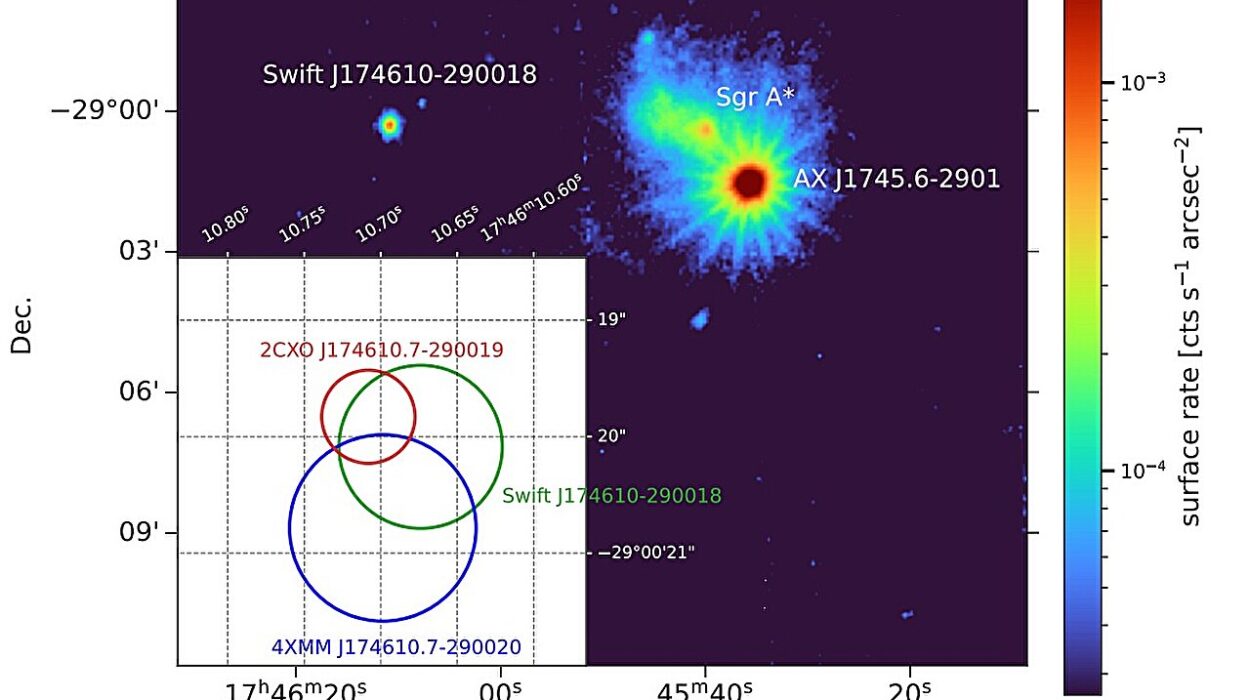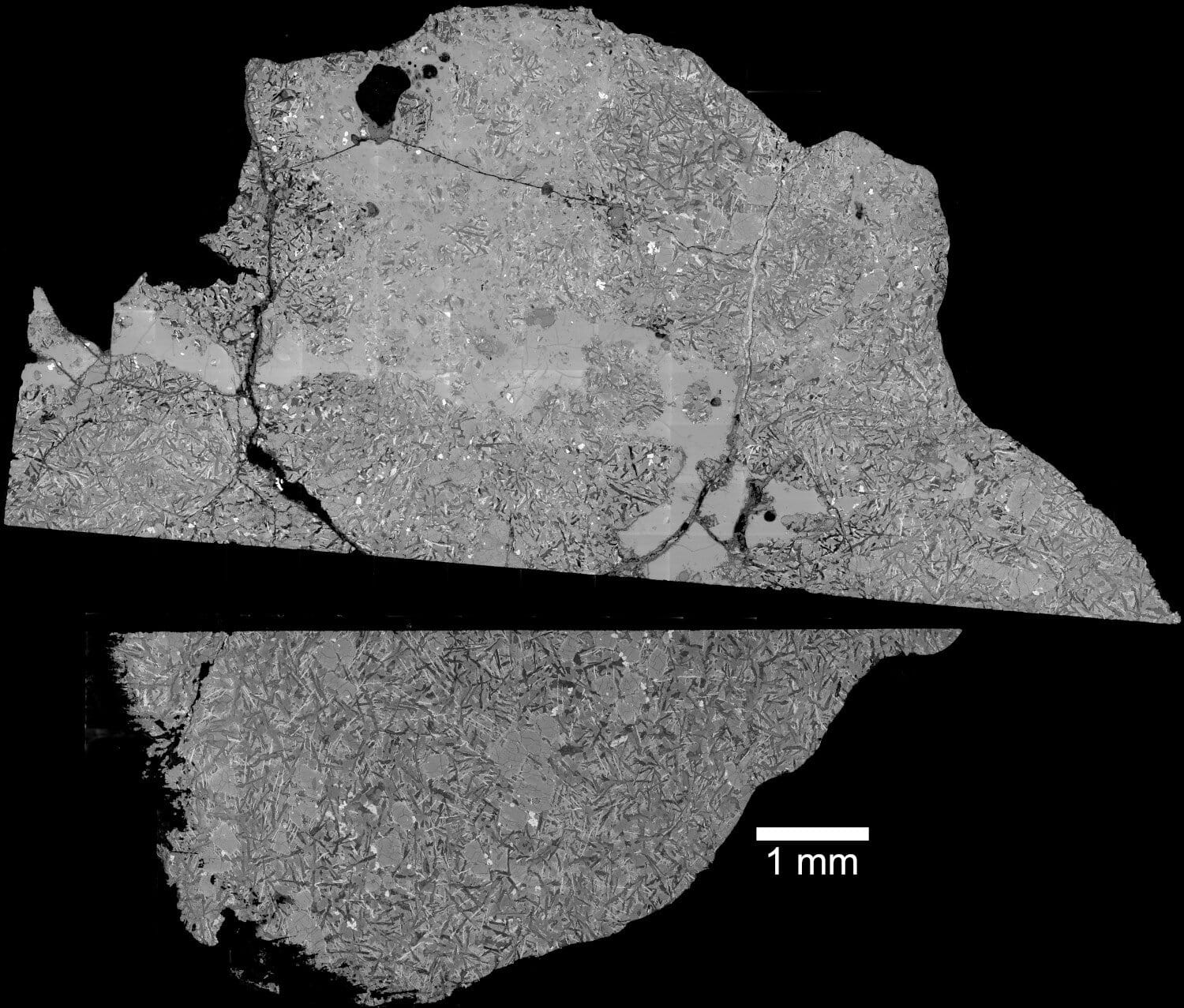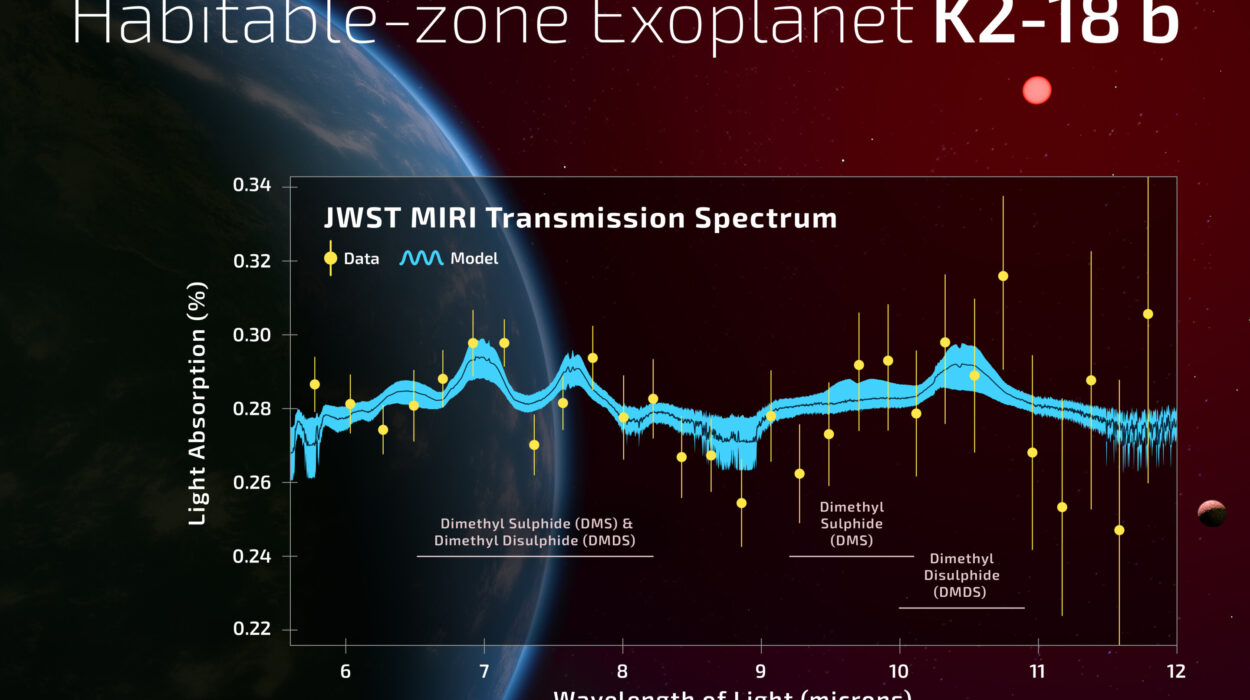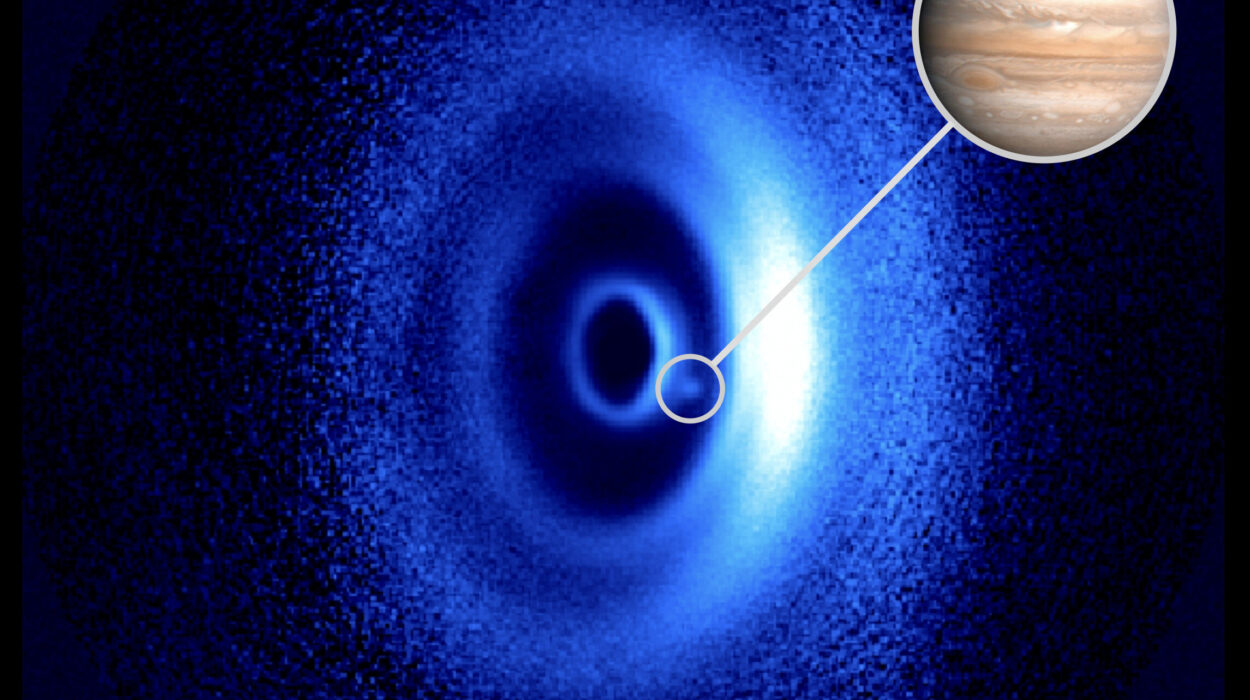In 1918, long before humanity had even dreamed of photographing a black hole, astronomer Heber Curtis peered through his telescope and noticed something peculiar. From the heart of what was then believed to be a “nebula without stars,” a faint, luminous jet appeared to stretch outward like a cosmic spear. That object — later identified as the galaxy Messier 87, or M87 — would go on to become one of the most studied regions of the sky.
A hundred years later, in 2019, the Event Horizon Telescope (EHT) Collaboration would unveil the first-ever image of a black hole: a fiery ring encircling a dark void, the shadow of M87*, the supermassive black hole at the center of Curtis’s mysterious galaxy. That image was more than a technological triumph — it was a human one. It proved that what once seemed like science fiction could be seen, studied, and understood.
Yet one question, as old as Curtis’s first observation, remained: how does a black hole — an object known for swallowing everything, even light — create a jet of radiant energy that spans thousands of light-years?
Now, thanks to groundbreaking work by theoretical astrophysicists at Goethe University in Frankfurt, the veil over this cosmic paradox is lifting.
The Giant in Virgo
The galaxy M87 sits about 55 million light-years away in the constellation Virgo. When Charles Messier cataloged it in 1781, he described it simply as “a nebula without stars.” He could not have imagined that within this faint smudge of light lurked one of the most powerful engines in the universe.
At the heart of M87 resides M87*, a supermassive black hole containing roughly 6.5 billion times the mass of our Sun. Its gravity is so immense that space and time themselves are bent and twisted around it. Yet, paradoxically, this monster of gravity is also a source of unimaginable light.
M87* emits a jet of particles traveling at nearly the speed of light, stretching some 5,000 light-years across space — a structure so vast it would take light itself five millennia to cross it. These jets are among the most spectacular phenomena in the cosmos. They are seen not only in M87 but also in other galaxies hosting rotating black holes. The jets release enormous amounts of energy, sculpting the interstellar medium, influencing the formation of stars, and shaping the destiny of entire galaxies.
For over a century, scientists have known these jets exist. What they haven’t known — until now — is exactly how black holes create them.
Tapping the Spin of the Abyss
Black holes are more than just gravitational traps. Some of them spin, dragging the very fabric of spacetime around with them. Physicists have long theorized that this rotational energy could be tapped — somehow — to power the jets observed in galaxies like M87.
For decades, the most accepted explanation was the Blandford–Znajek mechanism, proposed in 1977. In this model, powerful magnetic fields, twisted and coiled around a spinning black hole, act like cosmic turbines. As these magnetic fields interact with the black hole’s rotation, they extract its energy, funneling it into jets that shoot outward along the poles.
This elegant theory has guided astrophysics for nearly half a century. But new research from Goethe University suggests it may not tell the whole story.
The Frankfurt Breakthrough
Under the leadership of Professor Luciano Rezzolla, a team of theoretical astrophysicists at Goethe University Frankfurt has developed a new computational model that simulates what happens in the extreme environment around a spinning black hole. Their creation — the Frankfurt Particle-in-Cell code for Black Hole Spacetimes (FPIC) — is an extraordinary tool capable of tracing the behavior of countless charged particles and electromagnetic fields under the influence of Einstein’s general relativity.
Using FPIC, the researchers ran simulations on some of Europe’s most powerful supercomputers — Frankfurt’s Goethe and Stuttgart’s Hawk — consuming millions of CPU hours. The result is one of the most precise and realistic portraits of how black holes convert rotational energy into matter and radiation ever achieved.
Their findings, published in The Astrophysical Journal Letters, reveal that in addition to the well-known Blandford–Znajek mechanism, another process plays a crucial role: magnetic reconnection.
The Secret of Magnetic Reconnection
Magnetic reconnection is a phenomenon where magnetic field lines — normally smooth and continuous — snap, twist, and rejoin, releasing massive amounts of energy in the process. It’s a bit like stretching a rubber band until it snaps and then reforms, but on a scale of unimaginable magnitude.
This process is already known to power solar flares and auroras in our own solar system. Around black holes, however, the conditions are infinitely more extreme. The FPIC simulations revealed that near the equatorial plane of a rotating black hole, intense magnetic reconnection activity occurs, creating chains of plasmoids — small, bubble-like structures of plasma — that move outward at nearly the speed of light.
These plasmoids act as miniature accelerators, converting magnetic energy into heat, radiation, and streams of relativistic particles. The simulations also showed that during this process, particles with negative energy can form — particles that effectively “steal” energy from the black hole’s rotation and channel it into the jet.
This mechanism provides a new, deeper understanding of how black holes can sustain their colossal outflows of energy — and how two seemingly different processes, magnetic reconnection and the Blandford–Znajek mechanism, may work hand in hand to ignite cosmic jets.
The Challenge of Simulating the Impossible
To simulate such processes is no small feat. As Dr. Claudio Meringolo, the main developer of the FPIC code, explains, “Understanding the complex dynamics of relativistic plasmas near compact objects requires solving the interplay between extreme gravitational and magnetic fields — and doing it in curved spacetime.”
In practical terms, that means simultaneously solving Einstein’s equations of general relativity, which describe gravity, and Maxwell’s equations, which govern electromagnetism. These equations are coupled, nonlinear, and operate in regimes far beyond what can be recreated in any laboratory. Only the world’s fastest supercomputers can begin to approach the computational power required to model them with sufficient precision.
Each simulation involved tracking billions of virtual particles interacting in the warped geometry surrounding a spinning black hole — a digital cosmos compressed into equations and algorithms.
The result was worth the effort. For the first time, scientists could watch — virtually — how a black hole’s spin transforms into light and motion, how plasma bubbles race outward, and how energy escapes the grasp of an object from which even light cannot escape.
Rewriting the Story of Black Holes
According to Dr. Filippo Camilloni, another key member of the project, the team’s results open a profound new perspective: “Our results suggest that the Blandford–Znajek mechanism is not the only way energy can be extracted from a black hole. Magnetic reconnection contributes as well, and possibly in ways we have yet to fully comprehend.”
This insight could reshape our understanding of some of the universe’s brightest and most violent phenomena — from quasars to gamma-ray bursts. These cosmic powerhouses, fueled by supermassive black holes, shine brighter than entire galaxies, and their energy output has long puzzled scientists. The FPIC simulations show that the combination of magnetic fields, rotation, and plasma turbulence may hold the key.
Professor Rezzolla adds, “With our work, we can demonstrate how energy is efficiently extracted from rotating black holes and channeled into jets. This allows us to help explain the extreme luminosities of active galactic nuclei and the acceleration of particles to nearly the speed of light.”
For him and his team, the thrill goes beyond the results. “It is incredibly exciting,” Rezzolla says, “to better understand what happens near a black hole using sophisticated numerical codes. But it is even more rewarding to explain these results through a rigorous mathematical treatment — to show that even the most chaotic forces in the cosmos can be described by the laws of physics.”
When Theory Meets Wonder
There’s something profoundly human in this story — the way curiosity bridges a century between Heber Curtis’s first observation of M87’s mysterious jet and today’s supercomputer simulations revealing its origin. It’s a story of how, through persistence and imagination, we’ve learned to read the hidden language of the universe.
Black holes, once symbols of mystery and fear, are becoming objects of understanding. They are not monsters, but engines — not destroyers, but transformers. They take energy and return it to the cosmos in luminous streams that span thousands of light-years, sculpting galaxies and perhaps seeding the very conditions that make planets, stars, and even life possible.
Every discovery peels back another layer of that cosmic story. We now know that within the silent heart of a galaxy, where light itself seems to die, a hidden fire still burns — a fire fueled by the spin of spacetime, fanned by magnetic storms, and flung outward across the universe as rivers of light.
A Window into the Future
The FPIC code and the insights it provides mark the beginning, not the end, of a new era in astrophysics. Future generations of telescopes — like the next phase of the Event Horizon Telescope and upcoming space-based observatories — will probe black holes in even greater detail, capturing their magnetic fields, plasma flows, and jets with unprecedented clarity.
As theoretical and observational astronomy intertwine, we edge closer to answering one of the most profound questions of all: How does the universe create something so luminous out of something so dark?
And perhaps, in that answer, lies a reflection of ourselves — beings made of stardust, seeking light in the darkest places, forever trying to understand the cosmic engines that made our existence possible.
The Fire That Shapes the Cosmos
The discovery that black holes can transform their rotational energy into powerful jets through both magnetic reconnection and the Blandford–Znajek process is more than an academic achievement — it’s a revelation about how the universe breathes.
From the smallest particles to the largest galaxies, energy flows, transforms, and renews. Even in the heart of darkness, creation continues. The black hole’s jet is a message written across the stars: that energy, like life itself, finds a way to emerge from even the deepest void.
And so, a hundred years after Heber Curtis saw a faint jet stretching from M87, we finally understand that he was witnessing not chaos, but creation — the fire within darkness, the light born from the spinning shadow of the universe itself.
More information: Electromagnetic Energy Extraction from Kerr Black Holes: Ab-Initio Calculations, The Astrophysical Journal Letters (2025). DOI: 10.3847/2041-8213/ae06a6
